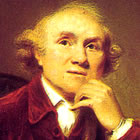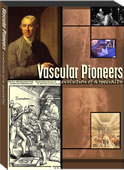
Dr. Frank J. Veith
Today was day one of the 45th Annual Veith Symposium in New York City. Started by Dr. Frank J. Veith, a pioneer in the field of endovascular approaches to vascular surgery, this five-day event covers the entire field of minimally invasive approaches to clinical situations that just a couple decades ago were the exclusive purview of open surgery.
The whole field of endovascular repair and intervention has grown exponentially since the first endovascular repair of an abdominal aortic aneurysm (EVAR) was performed by Dr. Juan Parodi in 1990, but it took quite some time to be accepted as a standard of care. Today the endovascular approach is the preferred procedure to repair an AAA and this is because of the advances in medical device design and manufacturing and the dedication of physicians to this less invasive non-surgical approach, physicians who will be attending this year’s Veith Symposium.
(By the way, this is a “repost” of an earlier article which I had written back in 2014, but I thought it only fitting to put it up again, because Dr. Frank Veith, who is chairing his symposium for the 45th time, performed the first endovascular AAA repair in the United States in 1992, along with Drs. Parodi and Michael Marin.)

John Hunter 1728 – 1793
When discussing the endovascular approach I always like to quote the 18th century physician John Hunter, considered the father of scientific surgery and the first physician to treat an aneurysm successfully, who wrote the following in his 1777 treatise, “The True Principles of Surgery”:
“This last part…namely operations…is a tacit acknowledgement of the insufficiency of surgery. It is like an armed savage who attempts to get that by force which a civilized man would get by stratagem.”
The stratagem, of course, is the endovascular approach. Keeping in line with “history,” I give you the following video clip from my documentary, “Vascular Pioneers: Evolution of a Specialty.” It details the first EVAR procedure, performed by Juan Parodi in Buenos Aires, Argentina, and then the first U.S. case performed by Drs. Parodi, Veith and Marin in New York. The story is told first person by these doctors, as well as Michael DeBakey, Hugh Beebe, and Ramon Berguer.
 The video includes interviews with 20 prominent physicians. Part I tells the history of vascular medicine. Part II is a lively and controversial discussion among key players in the field regarding the challenges and opportunities presented by evolving approaches to the treatment of vascular disease.
The video includes interviews with 20 prominent physicians. Part I tells the history of vascular medicine. Part II is a lively and controversial discussion among key players in the field regarding the challenges and opportunities presented by evolving approaches to the treatment of vascular disease.
You can also follow the Veith meeting on Twitter by following the hashtag #VEITH2018.



